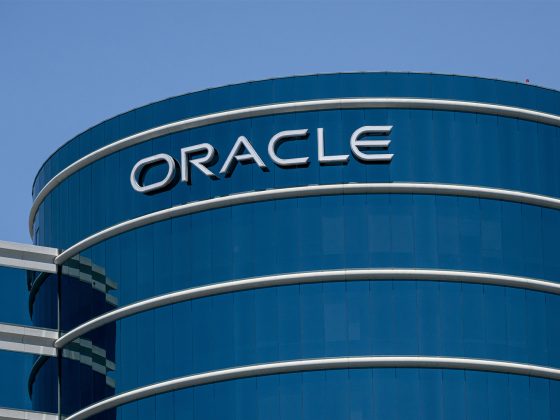Sure, Google Cloud offers world-class infrastructure, but one of the main reasons that customers choose our platform is to run their applications on one of our managed container platforms: Google Kubernetes Engine (GKE), the most scalable and easy to use service from the company that invented Kubernetes; Anthos for managing containers in hybrid and multicloud scenarios; and Cloud Run, our serverless platform for containerized workloads.
We made a lot of updates to these services in 2021 — here are the ones that resonated the most with you, our readers, in order of pageviews.
From our partners:
1. Introducing GKE Autopilot: a revolution in managed Kubernetes
Kubernetes users want the flexibility to customize their containerized workloads, without the need to manage a plethora of configurations. Enter GKE Autopilot, a new mode of operation for GKE that provides a managed control and data plane, an optimized configuration out-of-the-box, automated scalability, health checks and repairs, and pay-for-use pricing. Introduced in February 2021, this was by far our most read blog in this category. Read the full post.
2. Introducing Google Distributed Cloud—in your data center, at the edge, and in the cloud
Want the goodness of an industry-leading managed Kubernetes platform, but want to run it on managed hardware outside of the cloud? With Google Distributed Cloud, we’ve got you covered, with a combination of hardware and software that extends our infrastructure to the edge and into your data centers. Designed to support telecommunications applications as well as applications with strict data security and privacy requirements, the Google Distributed Cloud announcement was the most-read product blog coming from Google Cloud Next in October. Read the full post.
3. Introducing WebSockets, HTTP/2 and gRPC bidirectional streams for Cloud Run
A major area of focus for the Cloud Run team this year was to expand the kinds of applications that you can run on the platform. We started the year out with a bang, adding support for applications like social feeds, collaborative editing, and multiplayer games that rely on full bidirectional streaming capabilities. (This news came on the heels of another big Cloud Run feature announcement: support for minimum instances, to help minimize cold starts for latency-sensitive apps.) Read the full post.
4. Introducing GKE image streaming for fast application startup and autoscaling
Why do we say that GKE is the best managed Kubernetes service? Improvements like this. Image streaming is no incremental feature — the performance improvements it brings to application scale-up time is unique in the industry, and just might change how you think about what you can do with GKE. Read the full post.
5. The past, present, and future of Kubernetes with Eric Brewer
A recent addition to Kubernetes blog canon, this blog recaps a series of conversations between Google Cloud Developer Advocate, Stephanie Wong, and Google Fellow, Eric Brewer about the history of Kubernetes and Brewer’s role in the creation thereof. In addition to the Kubernetes origin story, Brewer talks about the need for securing the software supply chain, offers advice to platform operators, and where he sees Kubernetes going next. Read the full post.
6. Discover and invoke services across clusters with GKE multi-cluster services
Speaking of game-changing features, the release of GKE multi-cluster services established GKE as the service to use if you’re building applications that need to be deployed across cluster boundaries. Read the full post.
7. Run more workloads on Cloud Run with new CPU allocation controls
Remember how we talked about expanding the scope for Cloud Run? This powerful feature allows you to deploy more types of applications to Cloud Run by allocating CPU for the entire lifetime of container instances at a lower price — important for applications that need to do background processing outside of request processing. Read the full post.
8. 4 new features to secure your Cloud Run services
Of course, security is a must-have for any platform on which you run mission-critical applications, and Cloud Run is no exception. In this blog post, readers learned about features to help integrate your Cloud Run deployment into existing security processes, and to ensure the build provenance of their code. Read the full post.
9. Introducing Anthos for VMs and tools to simplify the developer experience
Containers are the future, but virtual machines are still a very important part of the present. Wouldn’t it be great if you could manage your VMs and containers the same modern way? We announced the upcoming Anthos for VMs product that does just that. This is a huge accelerator for those embracing cloud native ops! Read the full post.
10. The evolution of Kubernetes networking with the GKE Gateway controller
Kubernetes networking is a work in progress — an effort that Google is actively involved in. In 2020, Google and other community members open-sourced the Kubernetes Gateway API as an evolution of Ingress and service mesh APIs, and in 2021, we released our implementation of Gateway, which provides global, multi-cluster, multi-tenant load balancing for GKE. Read the full post.
Of course, these 10 posts represent just a small sliver of the work we did to improve our managed compute services in 2021. And stay tuned for 2022, when we’ll have lots more to share about how you can use Google Cloud compute services to transform how you run your applications.
By: Google Cloud Content & Editorial
Source: Google Cloud Blog
For enquiries, product placements, sponsorships, and collaborations, connect with us at [email protected]. We'd love to hear from you!
Our humans need coffee too! Your support is highly appreciated, thank you!





